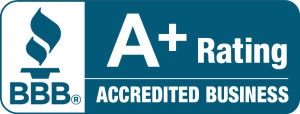Investing can be risky, and asset allocation is a way to manage that risk.
Instead of picking individual stocks, asset allocation focuses on broad categories, mixing them in the right proportion to match your financial goals, the amount of time you have to invest, and your risk tolerance.
Because not all investments are alike, spreading your investment dollars among different types of assets, such as stocks, bonds, and cash alternatives, spreads risk. It doesn’t guarantee a profit or ensure against a loss, of course, but it can help you manage the level and type of risk you face.
Using asset allocation, you identify the asset classes that are appropriate for you and decide the percentage of your investment dollars that should be allocated to each class (e.g., 70 percent to stocks, 20 percent to bonds, 10 percent to cash alternatives).
Here are some things to keep in mind when you allocate your assets.
The Three Major Classes of Assets
Here are the three major classes of assets:
- Stocks: Although past performance is no guarantee of future results, stocks have historically provided a higher average annual rate of return than other investments, including bonds and cash alternatives.
- Stocks are generally more volatile. Investing in stocks may be appropriate if your investment goals
are long-term.
- Stocks are generally more volatile. Investing in stocks may be appropriate if your investment goals
- Bonds: Historically less volatile than stocks, bonds do not provide as much opportunity for growth as stocks do.
- They are sensitive to interest rate changes, so when interest rates rise, bond values tend to fall, and when interest rates fall, bond values tend to rise. As a result, bonds redeemed before maturity may be worth more or less than their original cost.
- Because bonds typically offer fixed interest payments at regular intervals, they may be appropriate if you want regular income from your investments.
- Cash alternatives: Cash alternatives (or short-term instruments) offer a lower potential for growth than other types of assets but are the least volatile.
- They are subject to inflation risk, the chance that returns won’t outpace rising prices.
- They provide easier access to funds than longer-term investments and may be appropriate for short-term investment goals.
You can diversify across asset classes by purchasing stocks, bonds, and cash alternatives, and you can do so within a single class.
For example, when investing in stocks, you can choose to invest in large companies that tend to be less risky than small companies. Or, you could choose to divide your investment dollars according to investment style, investing for growth or value.
Your objective is the same either way: diversify by choosing complementary investments that balance risk and reward within your portfolio.
How to Divide Your Assets
Your objective in using asset allocation is to construct a portfolio that can provide you with the return on your investment you want without exposing you to more risk than you feel comfortable with. How long you have to invest is important, too, because the longer you have to invest, the more time you have to ride out market ups and downs.
When you construct a portfolio, you can use worksheets or interactive tools that help identify your investment objectives, your risk tolerance level, and your investment time horizon. These tools may also suggest model or sample allocations that strike a balance between risk and return, based on the information you provide.
For instance, if your investment goal is to save for your retirement over the next 20 years and you can tolerate a relatively high degree of market volatility, a model allocation might suggest that you put a large percentage of your investment dollars in stocks, and allocate a smaller percentage to bonds and cash alternatives.
Of course, models are intended to serve only as general guides. Determining the right allocation for your circumstances may require a more sophisticated analysis.
Build Your Portfolio
Choose specific investments for your portfolio that match your asset allocation strategy.
Investors who are investing through a workplace retirement savings plan typically invest through mutual funds. A diversified portfolio of individual securities is easier to assemble in a separate account.
Mutual funds offer instant diversification within an asset class, and in many cases, the benefits of professional
money management.
Investments in each fund are chosen according to a specific objective, making it easier to identify a fund or a group of funds that meet your needs. For instance, some of the common terms you’ll see used to describe fund objectives are capital preservation, income (or current income), income and growth (or balanced), growth, and aggressive growth.
Before investing in a mutual fund, carefully consider its investment objectives, risks, fees, and expenses, which can be found in the prospectus available from the fund. Read the prospectus carefully before investing.
Pay Attention to Your Portfolio
Once you’ve chosen your initial allocation, revisit your portfolio at least once a year (or more often if markets are experiencing greater short-term fluctuations).
One reason to do this is to rebalance your portfolio. Because of market fluctuations, it may no longer reflect the initial allocation balance you chose.
For instance, if the stock market has been performing well, eventually you’ll end up with a higher percentage of your investment dollars in stocks than you initially intended. To rebalance, you may want to shift funds from one asset class
to another.
In some cases, you may want to rethink your entire allocation strategy. If you’re no longer comfortable with the same level of risk, your financial goals have changed, or you’re getting close to the time when you’ll need the money, you may need to change your asset mix.
Conclusion
Allocating your assets seems straightforward on the surface, but can require a lot of attention to detail to do it right.
As experienced financial professionals, we help clients like you figure out the best retirement plan for their situation, so that when they’re ready they can retire gracefully with peace of mind.
Please connect with us and let us help you plan for your dream retirement. We would be delighted to go on the journey with you.










